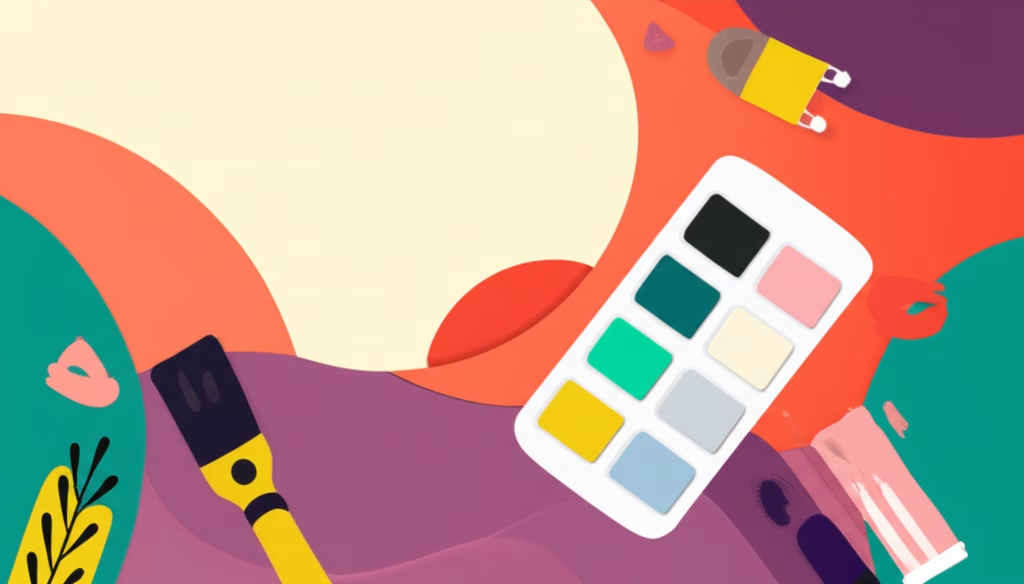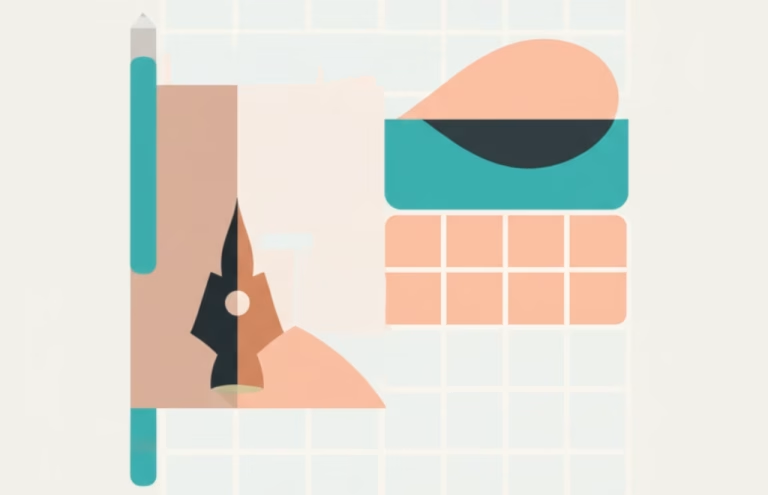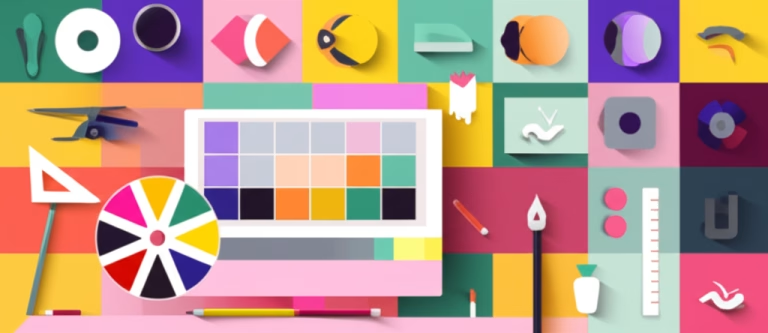Essential Resources & Courses for Beginners
Table of Contents
Your Starting Point in Design
Stepping into the world of design can feel like entering a vibrant, bustling city. There’s so much to see and do, but where do you start? It’s easy to feel overwhelmed by all the tools, terms, and techniques. You might wonder, “How did everyone else learn?” The good news is, nobody starts as an expert. Every great designer began by learning the basics and practicing. The secret isn’t magic talent; it’s having the right map and tools for your journey. That’s where learning materials come in. This guide will help you find your way through the wealth of information available, showing you how to pick the best resources and learning paths to kickstart your creative adventure.
What are Design Resources and Courses?
Think of design resources and courses as your learning toolkit and instruction manual. Resources are things you use for information or inspiration – like articles, blogs, free tools, templates, color palettes, stock photos, or design community forums. They are often specific pieces of information or assets you can use right now. Courses, on the other hand, are structured learning programs. They take you step-by-step through a topic, whether it’s graphic design fundamentals, using specific software, or understanding user experience. They provide a curriculum designed to build your knowledge over time.
Why Are Design Resources and Courses Important?
Learning materials are crucial because they provide the foundation and ongoing support for your growth. They teach you the fundamental principles – like color theory, typography, and layout – that are essential for creating effective visuals. They introduce you to the software and tools that designers use daily. Beyond the basics, they help you stay updated on trends, learn new techniques, and connect with other creatives. Without structured learning or reliable sources of information, your journey would be much harder, like trying to build something without instructions or the right tools. They accelerate your learning curve and build your confidence.
Key Principles for Choosing Resources and Courses
- Quality Matters: Look for materials created by reputable sources, experienced designers, or well-known educational platforms. Check reviews and testimonials. High-quality content is clear, accurate, and up-to-date.
- Relevance to Your Goals: Choose learning paths that align with what you want to create. Are you interested in logos, websites, illustrations, or something else? Pick materials that focus on those areas or provide broad foundational knowledge if you’re exploring.
- Consider Your Learning Style: Do you prefer watching videos, reading text, or hands-on exercises? Select courses or resources that match how you learn best. Interactive content or practical projects can be very effective.
- Balance Cost and Value: Many excellent free resources exist, but paid courses often offer more depth, structure, and support. Evaluate the cost against the potential value you’ll gain in skills and knowledge. Free trials or previews can help you decide.
- Check the Instructor/Author: Who is teaching or providing the information? Look into their background and experience. Learning from practicing professionals can offer valuable real-world insights.
- Up-to-Date Content: The design world changes quickly, especially regarding software and trends. Ensure the materials you choose are relatively current to learn relevant techniques and tools.
- Community and Support: Some courses or platforms offer access to communities or instructors for questions and feedback. This can be incredibly helpful for beginners navigating challenges.
- Project-Based Learning: Look for courses that include practical projects. Applying what you learn is the best way to solidify your understanding and build a portfolio.
- Accessibility: Consider the format and platform. Is it easy to access on your devices? Is the content well-organized and easy to navigate?
- Specialization vs. Fundamentals: If you’re just starting, focus on foundational principles before diving into highly specialized topics. A strong base makes learning niche skills much easier later on.
Common Mistakes When Choosing Resources and Courses and How to Avoid Them
It’s easy to stumble when you’re new. Here are some common pitfalls and how to steer clear.
- Getting Lost in Free Resources Without Structure
How to Avoid: Start with a structured beginner’s course (free or paid) that covers fundamentals sequentially. Use free resources later to supplement specific topics or find inspiration. - Buying Every Popular Course Immediately
How to Avoid: Resist the urge to collect courses. Focus on completing one or two relevant ones at a time. Research thoroughly before investing your money. - Only Learning Theory Without Practice
How to Avoid: Actively seek out courses or tutorials that include hands-on projects. Set aside dedicated time to practice using the tools and applying the principles you learn. - Not Checking the Difficulty Level
How to Avoid: Ensure the resource or course is labeled as beginner-friendly. Jumping into advanced topics too soon can be discouraging. - Ignoring Reviews or Instructor Credentials
How to Avoid: Always look for reviews from other learners. Research the instructor’s background to ensure they are qualified to teach the subject matter effectively. - Focusing Only on Software Tutorials
How to Avoid: Software is just a tool. Make sure your learning includes foundational design principles (typography, color, layout, composition) which are timeless and applicable regardless of the software you use. - Trying to Learn Too Many Things at Once
How to Avoid: Pick one area or software to focus on initially. Master the basics there before branching out. Gradual learning is more effective than trying to absorb everything simultaneously. - Not Setting Aside Dedicated Learning Time
How to Avoid: Treat your learning like any important appointment. Schedule regular study sessions and stick to them. Consistency is key to progress. - Feeling Discouraged by Difficult Concepts
How to Avoid: It’s okay to struggle! Break down complex ideas into smaller parts. Don’t hesitate to rewatch lessons, reread materials, or look for alternative explanations. Persistence pays off. - Comparing Your Progress to Others
How to Avoid: Everyone learns at their own pace. Focus on your own improvement and celebrate small wins. Your journey is unique.
How to Apply Resources and Courses to Your Design Journey
Learning is great, but applying that knowledge is where the magic happens. Here’s how to make the most of your chosen resources and courses:
- Start with Fundamentals: Begin with courses covering the core principles of design: color theory, typography, composition, and layout. These are the building blocks for everything else you’ll do.
- Choose One Software to Master (Initially): Pick a primary design tool relevant to your interest (e.g., Adobe Photoshop, Illustrator, Figma, Sketch, Procreate). Find courses specifically for beginners using that software and practice diligently.
- Work on Projects as You Learn: Don’t just watch or read; do. Actively follow along with tutorials and complete assigned projects. If your course doesn’t have projects, create your own based on the concepts you’re learning.
- Build a Portfolio (Even with Practice Projects): As you complete projects from courses or tutorials, save your best work. These early pieces are the start of your portfolio, showcasing what you’ve learned and can do.
- Join Design Communities: Many courses or platforms have forums or groups. Engage with other learners, ask questions, and share your work. Getting feedback is invaluable for improvement.
- Use Resources to Supplement Coursework: While taking a course, use external resources (blogs, articles, videos) to get different perspectives on challenging concepts or explore related topics in more depth.
- Practice Consistently: Short, regular practice sessions are more effective than infrequent long ones. Dedicate time each week to learning and creating.
- Analyze Design Around You: Use your newfound knowledge to critically look at the design in the world – websites, apps, posters, packaging. Ask yourself why it works or doesn’t work, applying the principles you’ve learned.
- Don’t Be Afraid to Experiment: Once you grasp the rules, try breaking them creatively. Experimentation is key to developing your unique style.
- Stay Curious and Keep Learning: The design field is constantly evolving. Make a habit of seeking out new resources and learning opportunities throughout your career. Learning is a lifelong process.
Frequently Asked Questions (FAQ) about Design Resources and Courses
Q: Are free design resources good enough to start?
A: Absolutely! Many excellent free resources like blogs, tutorials, and basic software trials can help you learn fundamental concepts and practice essential skills without any initial investment.
Q: How long does it take to learn design using courses?
A: Learning design is a continuous journey. Beginner courses might take a few weeks to months to cover fundamentals, but becoming proficient and developing a strong portfolio takes ongoing practice and learning over a longer period.
Q: Do I need a degree to be a designer?
A: While degrees provide structured education and networking, they are not the only path. Many successful designers are self-taught or learned through online courses, bootcamps, and hands-on experience. A strong portfolio and relevant skills are often more important.
Q: What’s the difference between UI and UX design courses?
A: UI (User Interface) design courses focus on the visual look and feel of a product (buttons, layouts, colors). UX (User Experience) design courses focus on how the user interacts with the product and their overall journey and satisfaction. Many courses cover both areas as they are closely related.
Embarking on Your Design Learning Adventure
You’ve taken a fantastic first step by seeking out information on how to learn. We’ve explored what design learning materials are, why they’re essential, how to choose them wisely, common errors to avoid, and practical ways to apply your new knowledge. Remember, every expert started where you are now. With the right resources and a commitment to practice, you can build the skills you need to bring your creative visions to life. Don’t wait for the perfect moment; start exploring, learning, and creating today. Your design journey is waiting.
Continue your studies by reading our article on Understanding Basic Design Principles!



